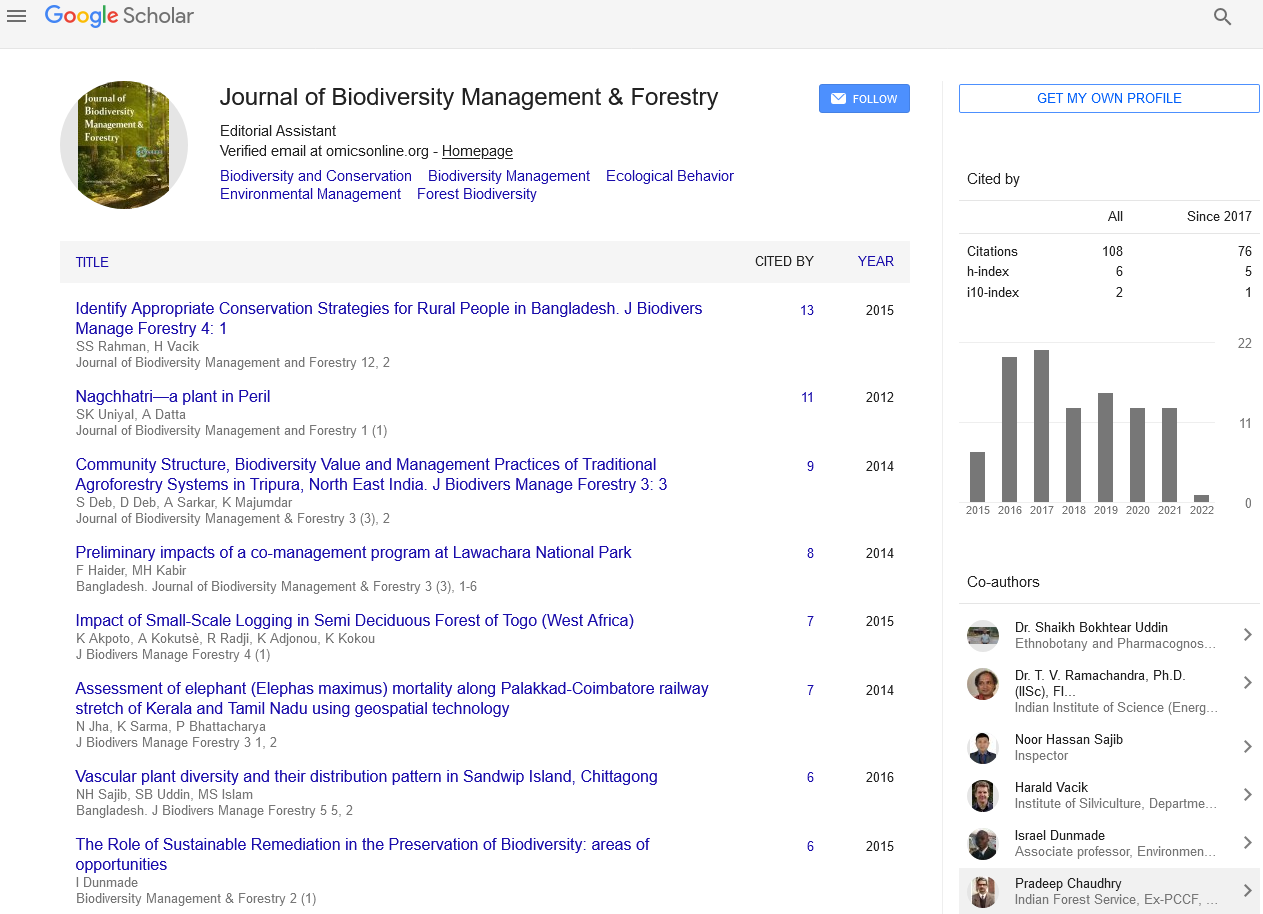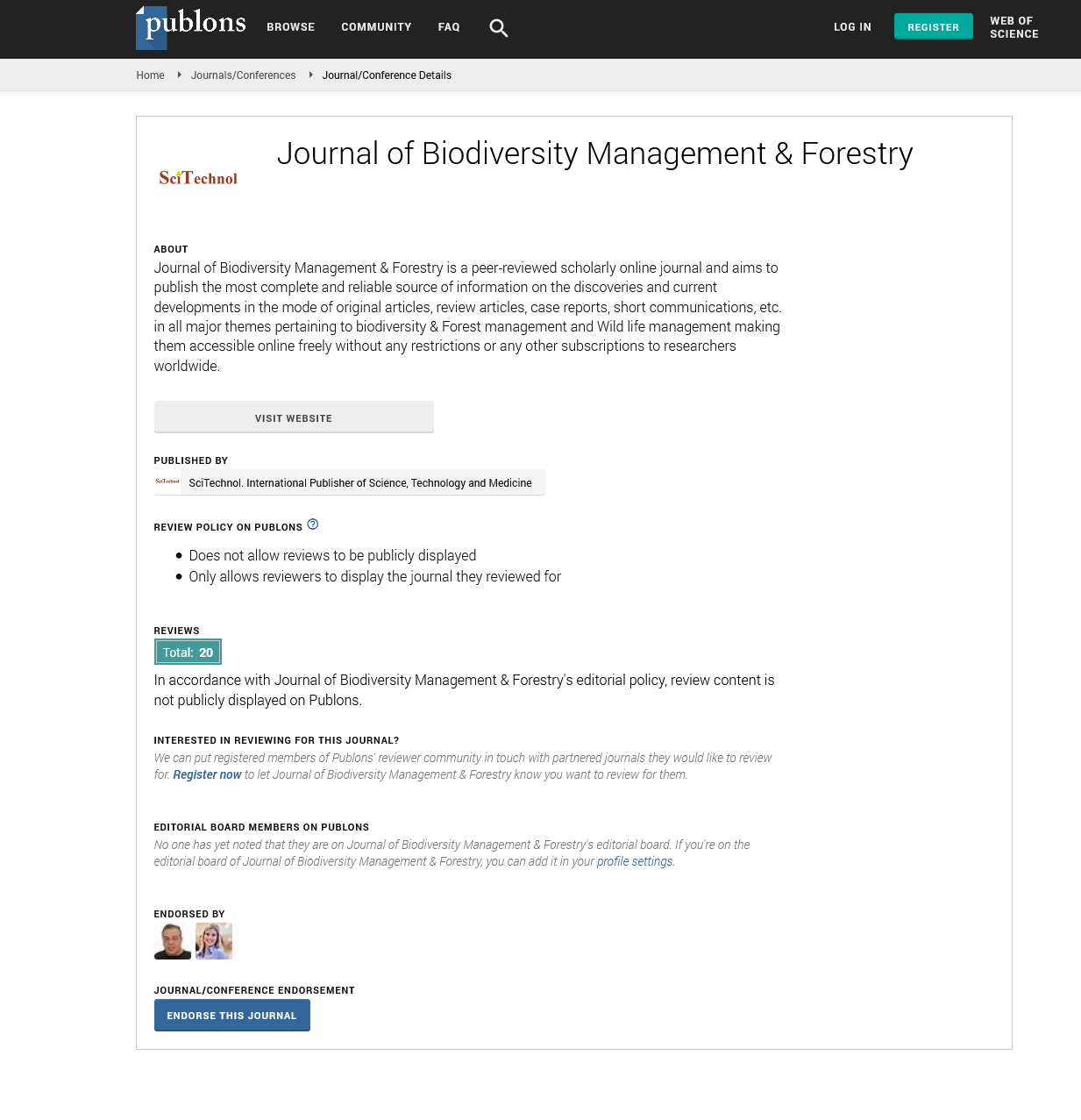Assessing the interplay of financial development, human capital, democracy, and industry 5.0 in environmental dynamics
Mahvish Muzaffar
The University of Lahore, Pakistan
: J Biodivers Manage Forestry
Abstract
The anthropogenically induced ecological resource exploitation surpasses the Earthâ??s regenerative capacity and has resulted in ecological bankruptcy. Conceding that, the United Nations mandates environmental restoration by 2030. Against this backdrop, this study seeks to orchestrate a hybrid framework by modulating the Quintuple Helix Model into an Anthropomorphized Stochastic Quintuple Helix Model (ASQHM). This model introduces human behaviour and allows for hypothesis testing. ASQHM stipulates that the propensity of espoused eco-innovation aimed at environmental restoration is contingent upon five composite helices: human capital, democracy, Industry 5.0, media, and pro-environmental human behaviour. In addition, financial development has been deemed imperative to facilitate these variables, which were considered stakeholders in this study. To fill gaps in the literature, three variables, namely democracy, Industry 5.0, and pro-environmental human behaviour (PEHB), are formed through principal component analysis. This panel data study employs the Generalized Methods of Moments model to compute the ASQHM for developed and less developed countries from 1995 to 2022. The results imply that the first helix (human capital) levitates environmental restoration in developed countries (DCs) but yields the opposite in less developed countries (LDCs). Democracy, Industry 5.0, and information and communication technology helices demonstrate a solicited negative relationship with ecological footprints in both panels, thus supplementing environmental restoration. The fifth helix, PEHB, escalates ecological footprints in DCs; however, it abets environmental restoration in LDCs. The postulated ASQHM â??partiallyâ? works in DCs and LDCs, rejecting its hypothesized role in the former group while confirming it in the latter group. Astonishingly, DCs fall short of the requisite PEHB (fifth helix), and LDCs do not have the at-par human capital (first helix) to reduce ecological footprints, catalyse eco-innovation, and partake in the environmental restoration process. Despite slight discrepancies in both panels, these findings validate the effectiveness of this hybrid ASQHM as a decisive determinant of environmental restoration. Based on the findings, this study also suggests practical policies.
Biography
Mahvish Muzaffar is an academic affiliated with The University of Lahore, Pakistan. With a strong commitment to education and research, she is actively engaged in advancing knowledge within her field of expertise. Known for her analytical thinking and dedication to academic excellence, Mahvish contributes to both the academic and personal development of her students. Her work reflects a passion for lifelong learning and a drive to positively impact her community through education.
 Spanish
Spanish  Chinese
Chinese  Russian
Russian  German
German  French
French  Japanese
Japanese  Portuguese
Portuguese  Hindi
Hindi 
